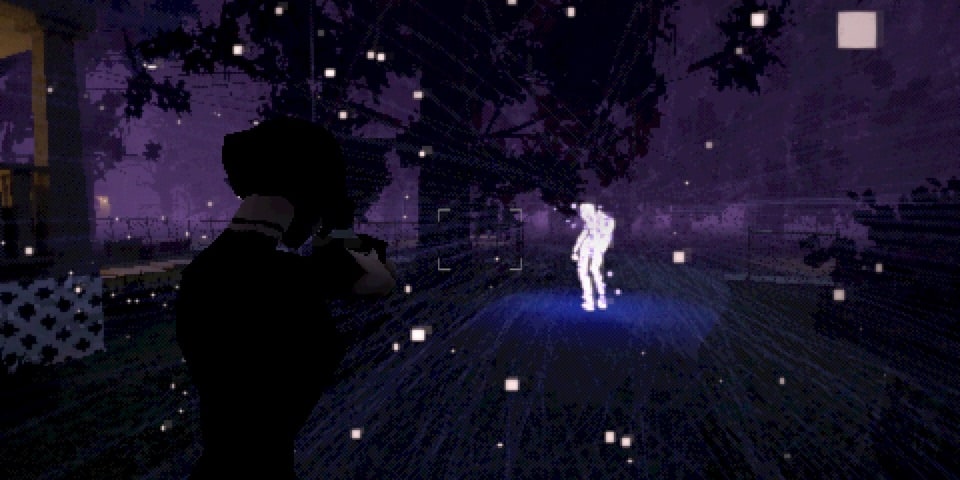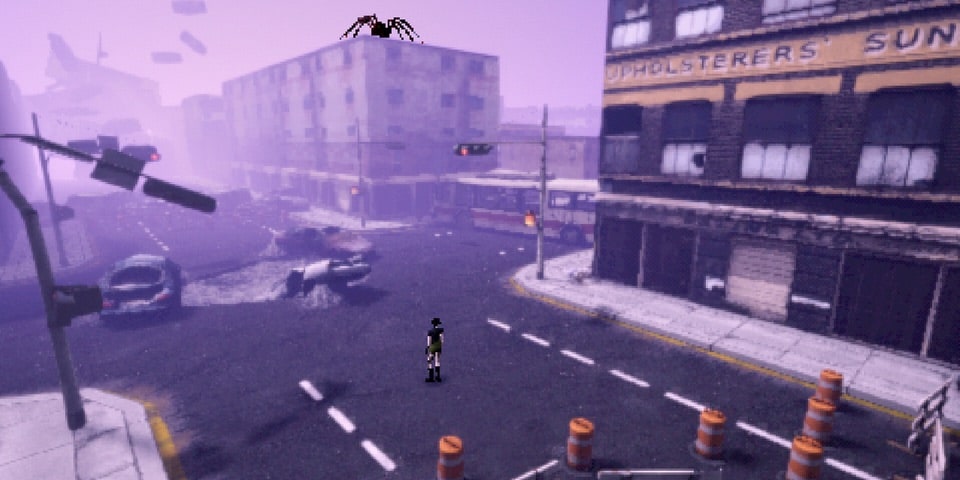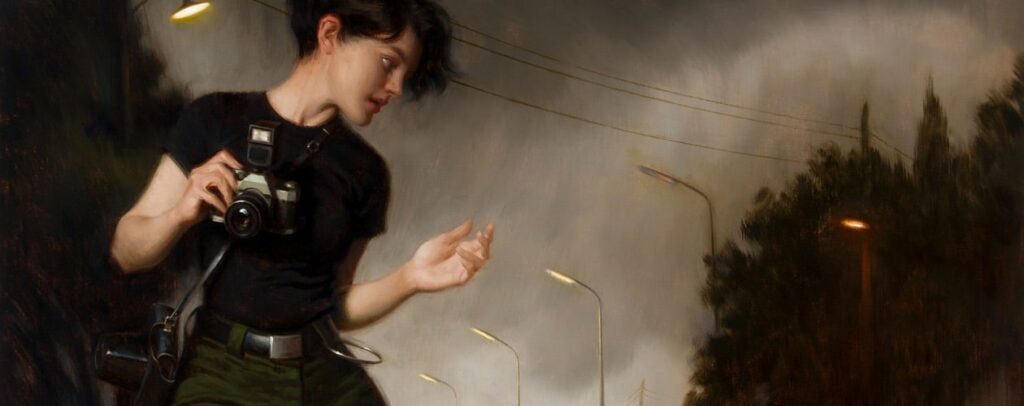Out of all the promising indie horror games both in the works and recently released, Heartworm stands out due to taking influence from Fatal Frame alongside the more usual Silent Hill and Resident Evil inspirations. This stems in part from the use of a camera as your main weapon, but also from the sense of unease and spectral enemies. Having enjoyed the demo last year, the full game is another stellar indie horror to add to the growing pantheon.
Unlike the usual viral incident or plague of horrors, Heartworm features a far more individual and internalised narrative. Sam, mourning the loss of her grandfather, is thrust into a static-filled TV in a classic ‘isekai’ story and finds herself confronting traumatic memories and environments constructed from her worst fears and insecurities. This all adds up to a horror that is concerned with trauma and grief rather than conspiracies and secretive institutions – another way in which Heartworm is far closer to Silent Hill than Resident Evil.
The aesthetic of Heartworm is clearly inspired by the crunchy polygons of the original PlayStation and that graphical style is absolutely perfectly suited to both the survival horror genre and the nostalgic tone of this game in particular. There is an option to activate a graphical smoother, but this feels like a betrayal of the developer’s visual intention to my eyes. Backgrounds are often atmospherically indistinct, but there is a good variety of locations from abandoned schools and hospitals to a disorientating hedge maze.
Sam is far from the usual survival horror protagonist. Neither a highly trained special forces operative nor a depressed divorced dad, instead she is a smart and witty character who takes incredible events in her stride but is clearly working through some difficult memories. Her hipster appearance makes her ideally suited to a game that is in and of itself a meta study of nostalgia and the toxic way in which unresolved traumas can fester and become dangerously all-consuming.
Your camera is the only weapon at your disposal and is used to fend off enemies, but fighting is mostly a last resort outside of boss encounters and certain foes that trap you in a ring of rocks. Instead you’ll mostly find that running from monsters is the most effective and efficient approach – theres are the traditional limitations on ammo and resources here. There is a burst mod accessory you can attach to your camera, though it feels as if more should have been included to vary your offence. When using your camera, the perspective switches to an over-the-shoulder one which makes aiming more accurate and contrasts nicely with the traditional fixed camera perspective of the rest of the game.

The fixed camera perspective works in setting the mood and tone whilst traditional tank controls work perfectly – although modern options are available for those with an aversion to them. My only real complaint with the camera is that the view is a little too zoomed out and it can be difficult to make out what is happening at times. This was exacerbated when playing on Steam Deck; it works fin, but I found navigation easier on the larger screen, especially in some of the darker environments.
Exploring the various areas in the game involves the usual mixture of puzzles, locked doors, and riddles to solve. Whilst many of these are very traditional they are all well judged and offer the right amount of challenge and difficulty. Making sure that you collect all notes is essential as clues are hidden throughout them, from keywords to number combinations and even, in one memorable case, a sequence of keys to play on a piano. Navigating each zone is helped by an easily read map, which also features a welcome visual cue as to whether a room is completed, but I did find the wilderness level with its similar looking routes more difficult to navigate than the more contained urban environments.

The most memorable moments in Heartworm are some thrilling boss battles against horrific foes ranging from giant spiders (thankfully there is an arachnophobia toggle) and mutated deer to a nightmarish being made entirely of unspooled VHS tapes. These battles will test your reactions and movement as well as involving some puzzle elements. As resources are limited you’ll find it useful to hoard some healing items for these encounters in particular. Whilst there is a limited inventory I never found this to be an issue as items are usually picked up and used relatively close together. The exceptions here are some items that I never found a use for, which may well be linked to a secret ending.


